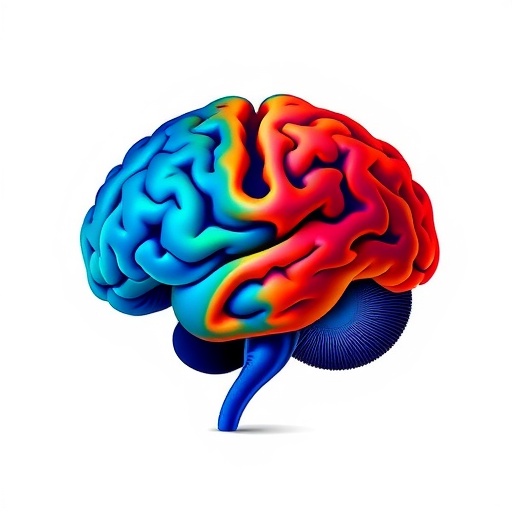In the evolving landscape of psychiatric research, bipolar disorder (BD) stands out as a profoundly complex and debilitating affective condition, marked by its cyclical episodes of mania and depression. Timely identification and intervention remain pivotal to mitigating the disorder’s long-term impact. Emerging evidence and technological advancements now position neuroimaging and digital monitoring techniques at the forefront of early detection and relapse prevention strategies. A forthcoming webinar titled “Tracking Mood Instability in Bipolar Disorder: Advances in Neuroimaging and Digital Monitoring” hosted by the Brain & Behavior Research Foundation (BBRF) illuminates this cutting-edge research, spearheaded by Dr. Danella Hafeman at the University of Pittsburgh School of Medicine.
Bipolar disorder’s heterogeneity makes standardized diagnostics challenging, especially during the prodromal phase when mood fluctuations can be subtle and episodic. Dr. Hafeman’s work leverages functional magnetic resonance imaging (fMRI) to probe the neural circuitry underlying BD, focusing on dynamic alterations in brain network connectivity that may precede overt mood episodes. fMRI, with its high spatial and temporal resolution, allows researchers to capture the brain’s intrinsic activity patterns related to emotional regulation, executive functioning, and reward processing—domains typically disrupted in BD patients.
Beyond neuroimaging, the integration of mobile sensing technologies represents a paradigm shift in psychiatric monitoring. Novel mobile platforms accumulate continuous behavioral data through wearable sensors and smartphone interactions—metrics historically inaccessible in clinical settings. By analyzing variables such as sleep architecture, motor activity, geolocation patterns, and phone usage frequency, Dr. Hafeman’s team identifies subtle behavioral biomarkers earlier than conventional clinical assessments would permit. These digital phenotyping approaches harness machine learning algorithms to delineate the nuanced patterns predictive of mood destabilization.
Early studies implicate aberrations in sleep-wake cycles and circadian rhythm disruptions as potent precursors to mood episodes in BD. Mobile devices equipped with accelerometers and gyroscopes quantify rest-activity rhythms with unprecedented granularity. The data reveal specific signatures correlating with the transition from euthymic states to depressive or manic episodes. Such findings underscore the clinical value of continuous, real-world data acquisition that transcends episodic clinical visits and subjective self-reports.
The symposium also addresses the neurobiological substrates identified via fMRI that correspond with these behavioral phenotypes. Dr. Hafeman’s research highlights altered functional connectivity within the fronto-limbic circuitry—a core network implicated in emotional regulation and mood stability. Disrupted synchrony between the prefrontal cortex and amygdala suggests impaired top-down regulation mechanisms that may herald mood exacerbations. By uniting neuroimaging data with real-time digital markers, the research delineates a multidimensional biomarker profile for BD.
This integrative methodology portends transformative implications for clinical practice. Currently, bipolar disorder diagnosis often comes post hoc, following at least one manic or hypomanic episode detectable by clinical symptomatology. The capability to predict imminent mood episodes via objective neural and behavioral markers could revolutionize treatment paradigms, enabling preemptive pharmacological or psychotherapeutic interventions. Such precision psychiatry approaches aim to forestall full-blown episodes, reducing hospitalizations and enhancing patient quality of life.
Further technical exploration within the webinar includes the analytical frameworks applied to complex neuroimaging and sensor data. Advanced signal processing techniques de-noise fMRI recordings, isolating task-related and resting-state activity relevant to BD pathology. Meanwhile, mobile sensing data undergo feature extraction and time-series analysis to identify longitudinal trends. Machine learning classifiers then integrate multimodal inputs, generating predictive models that can potentially be implemented in clinical decision support systems.
Ethical considerations surrounding this digital monitoring also warrant attention. The continuous collection of personal behavioral data raises privacy concerns, necessitating stringent adherence to confidentiality protocols and informed consent processes. Ensuring data security while maintaining research rigor is indispensable for translating these technologies from lab environments to widespread clinical adoption.
Moreover, the webinar elaborates on the potential of these technologies to personalize treatment trajectories. By correlating neurobiological and behavioral markers with treatment response data, clinicians may tailor interventions to individual patients’ neurophysiological profiles. This bespoke approach could mitigate the trial-and-error nature of traditional psychopharmacology, minimizing adverse effects and optimizing therapeutic efficacy.
Another focal point is the scalability and accessibility of mobile sensing tools. Given the ubiquity of smartphones, digital phenotyping offers an equitable means of continuous monitoring across diverse populations. This democratization of data collection may help address disparities in mental health care access, particularly in underserved communities where frequent clinical evaluations are impractical.
The webinar, hosted by Dr. Jeffrey Borenstein, President & CEO of BBRF, and noted for his Emmy® nominated series “Healthy Minds,” fosters a broader dialogue about the destigmatization of mental illness and the vital role of innovative research. It underscores the imperative of interdisciplinary collaboration, combining psychiatry, neuroscience, data science, and engineering to unravel BD’s complex etiology and course.
Ultimately, the integration of neuroimaging and digital monitoring heralds a new era for bipolar disorder management—one that promises earlier diagnosis, more accurate relapse prediction, and bespoke therapeutic strategies. As research in this domain advances, it holds the potential not only to transform clinical outcomes but also to reshape societal perceptions of mental illness, fostering hope through scientific innovation.
Subject of Research: Early detection and monitoring of bipolar disorder using neuroimaging (fMRI) and mobile sensing technologies.
Article Title: Tracking Mood Instability in Bipolar Disorder: Advances in Neuroimaging and Digital Monitoring
News Publication Date: Not specified, webinar scheduled for Tuesday, September 9, 2025
Web References:
- Brain & Behavior Research Foundation: https://www.bbrfoundation.org
- Webinar registration: https://bbrfoundation.org/event/tracking-mood-instability-bipolar-disorder-advances-neuroimaging-and-digital-monitoring
- Healthy Minds series: https://www.pbs.org/show/healthy-minds-with-dr-jeffrey-borenstein/
Image Credits: BBRF
Keywords: Bipolar disorder, neuroimaging, fMRI, digital monitoring, mobile sensing, mood instability, psychiatric research, behavioral biomarkers




